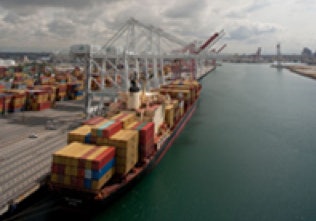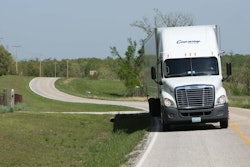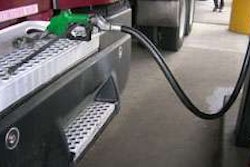
In another sign of improving air quality, air pollution at the Port of Long Beach fell for the third year in a row in 2009, with declines of up to 50 percent for key pollutants threatening public health, according to a report. ”This is great news for the Long Beach community and the entire region,” says Nick Sramek, president of the Long Beach Board of Harbor Commissioners. “Our air quality programs are expanding and delivering better results each year. Trucks, trains and ships are running cleaner than ever before.”
Air quality measures such as the Clean Trucks Program, the Green Flag vessel speed reduction program and shorepower for ships are having a positive effect on air quality, Sramek says. And while some of the pollution cuts can be attributed to a recession-related drop in cargo volume, but the port says the air pollution decline far outpaced the decline in trade. While container shipments were down 24 percent from 2005 to 2009, diesel particulate matter, a toxic air contaminant, was reduced by 52 percent. Nitrogen oxides, which contribute to smog formation, were down 35 percent and sulfur oxides, which cause respiratory symptoms, dropped 46 percent.
The port’s Clean Air Action Plan has set ambitious goals for reducing the pollution from goods movement activities. In the 2010 proposed update to the CAAP, the ports of Long Beach and Los Angeles together have set goals of reducing diesel particulates 72 percent by 2014, down from 2005 levels, for example. While on track to meet or exceed these goals, the port says it also intends to achieve significant reductions in health risks related to air pollution, as part of the ongoing implementation of the CAAP.
The CAAP is a master strategy for dramatically reducing air pollution at the Port of Long Beach and the neighboring Port of Los Angeles. It contains measures to address every mobile source of air pollution tied to goods movement in the ports – ships, trucks, trains, cranes, port terminal equipment, tugboats and more. It uses efficiencies, green growth, and technology advancements to reduce air pollution even with project cargo increases.
One of the most well-known elements of the CAAP is the Clean Trucks Program, which is requiring the replacement or retrofitting of the roughly 10,000 drayage trucks that serve the port. Started in October 2008, the Clean Trucks Program already has achieved nearly an 80 percent reduction in emissions from the trucking fleet, the port says.














